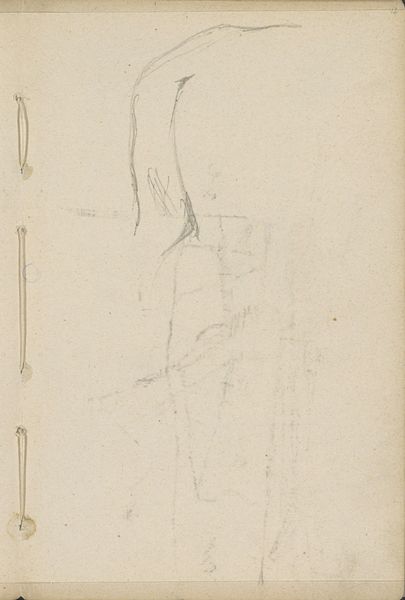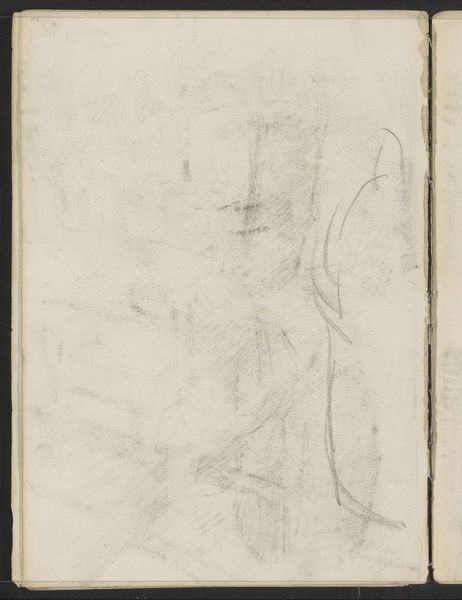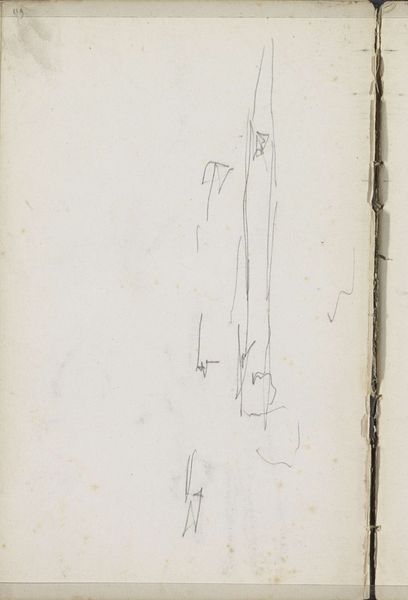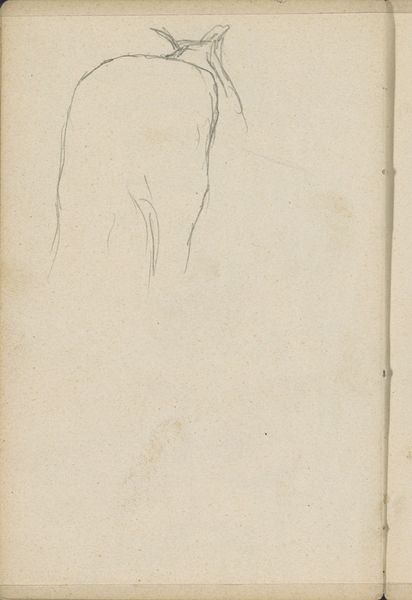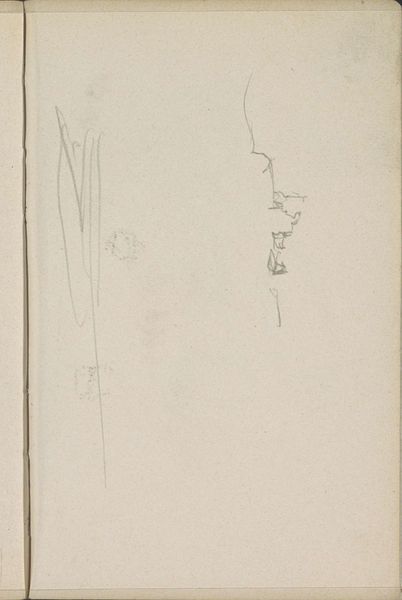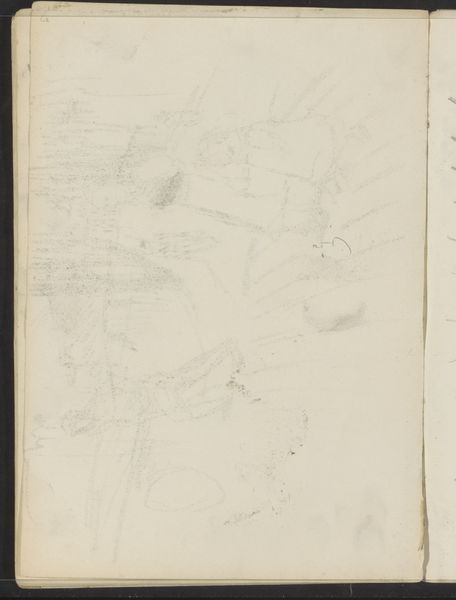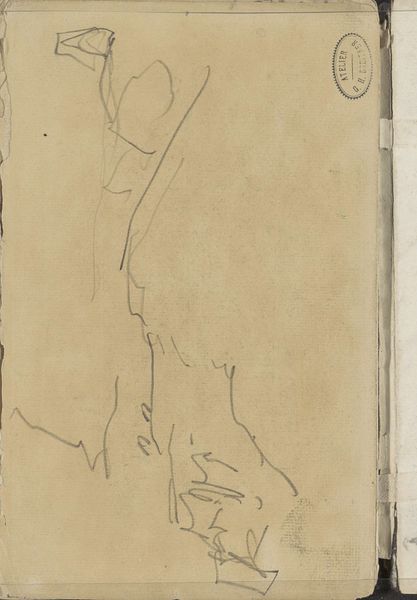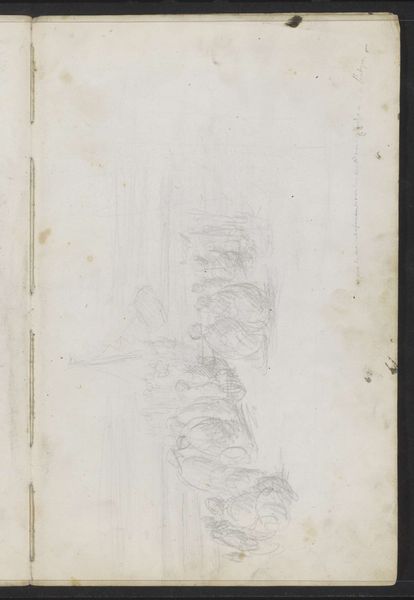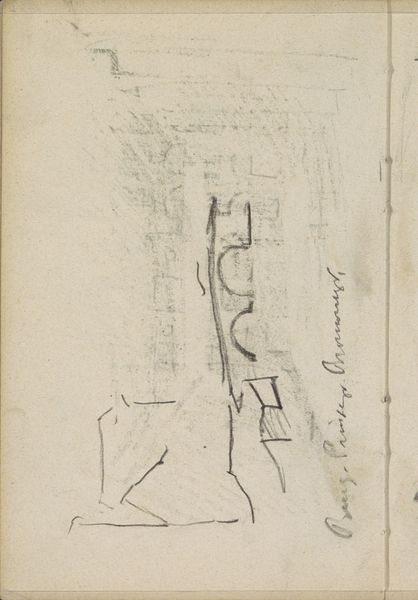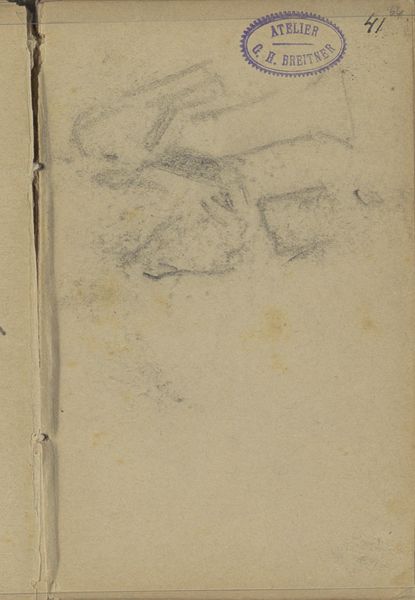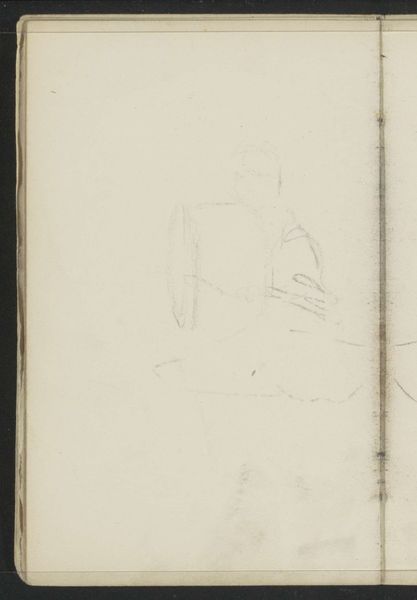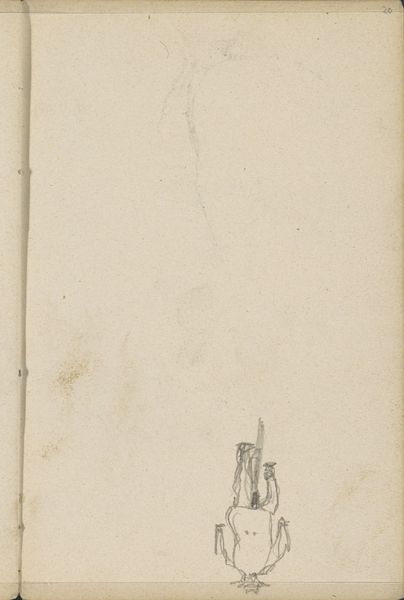
Copyright: Rijks Museum: Open Domain
Curator: This drawing, created around 1903 by George Hendrik Breitner, is titled "Twee paardenbenen," or "Two Horses' Legs," and resides here at the Rijksmuseum. Editor: It's skeletal, almost. Ghostly impressions on the paper, barely there. It has an immediacy, like a fleeting thought. Curator: Breitner was fascinated by the working horse and the urban landscape of Amsterdam. He documented the labor involved in transporting goods, but rarely celebrated it. The means of production are exposed, laid bare. Editor: Absolutely. The graphite on paper, the visible weave of the paper itself—it contributes to the rough aesthetic. But look at how the lines describe form. It’s almost sculptural in its suggestion of volume, despite the sparcity of details. Curator: This piece is also quite suggestive in its medium and scale. We have to consider that Breitner worked extensively with photography and it’s easy to assume that the photographic, immediate capture of life has influenced his sketches too. His process became very attuned to the quick impression. Editor: True, there's a casualness. Note, for example, how the paper's edge intrudes; this suggests we're seeing only a fragment of a larger scene, cropped abruptly. What interests me here is not the complete picture of labor or landscape, but what it says about art itself. About lines, perspective, and rendering mass through suggestion. Curator: Yes, the interplay between documenting reality, but also about the artist's engagement with it as material, which leads into further labor of creating new context with his production. Breitner was immersed in the realities of Amsterdam, both the working-class labor but also artistic trends during the time of Impressionism, shaping both the artwork and their meanings. Editor: Looking closely has truly altered my initial assessment. From a sparse and simple sketch to a condensed artistic and social inquiry! Curator: Indeed, understanding how labor, art, and perception all interplay adds a wealth of context to appreciating even a sketch as seemingly simple as this.
Comments
No comments
Be the first to comment and join the conversation on the ultimate creative platform.
